Great Easter Traditions Passed Down Over Centuries And Widely Practiced
A. Sutherland - AncientPages.com - Easter is the oldest and most important Christian holiday; it is a spring festival that celebrates Christ's resurrection from the dead.
As with other holidays, many customs associated with Easter originate from pagan traditions. Colorfully painted eggs were already known in China, 5,000 years ago. Rituals associated with fire occurred in many primitive cultures in connection with the advent of spring or feasts of the dead.
In ancient times eggs bore magical meaning. Archaeologists find eggs in tombs and graves dating back to times long before Christianity. Those eggs are either natural ones or made from marble, clay or other materials. An egg is described in numerous myths as the symbol of life and renewal, the source of everything which exists in this world.
During Easter time, people usually gift one another chocolate rabbits, embark on intrepid Easter egg hunts - and some celebrate the religious significance of the occasion. Many of these very ancient traditions have been passed down to us over the centuries, but there are a few that have been almost forgotten.
One of them is the so-called ‘lifting’ and ‘heaving’, which according to several sources was a popular Easter tradition in the 18th and early 19th centuries.
In 325, Council of Nicaea determined that handle it will be the first Sunday after the first full moon of spring.
The practice was common in Lancashire, Staffordshire, Warwickshire, and other parts of England. Groups of people would gather together in the street and physically lift those they came across into the air, expecting a financial reward in return. Hone describes the practice as differing slightly in different parts of the country:
In some parts, the person is laid horizontally, in others placed in a sitting position on the bearers’ hands. Usually, when the lifting or heaving is within doors, a chair is produced, but in all cases, the ceremony is incomplete without three distinct elevations. (SCM 03706, p. 426)
Lifting – an Easter Custom from William Hone, The Every-Day Book (London, 1826), vol. 1, p. 423 via University of Leicester
In Warwickshire, Easter Monday and Easter Tuesday were known as ‘heaving-day‘, because on the Monday it was the tradition for men to ‘heave and kiss the women’ and on the Tuesday for the women to do the same to the men.
Hone viewed the practice as, ‘an absurd performance of the resurrection’ derived from the Catholic church.
This practice was in decline by the early nineteenth. It persisted in some areas for a little longer, for example at Bakewell in Derbyshire where young men lifted and kissed the girls on Easter Monday as late as the 1890s.
Written by – A. Sutherland - AncientPages.com Senior Staff Writer
Copyright © AncientPages.com All rights reserved. This material may not be published, broadcast, rewritten or redistributed in whole or part without the express written permission of AncientPages.com
Expand for referencesMore From Ancient Pages
-
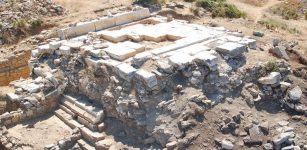 Excavations Begin In Ancient City Of Antiocheia Ad Cragnum, Turkey
Archaeology | Sep 4, 2015
Excavations Begin In Ancient City Of Antiocheia Ad Cragnum, Turkey
Archaeology | Sep 4, 2015 -
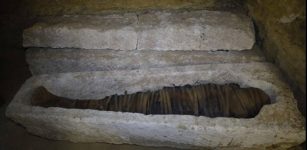 Tombs With Sarcophagi Of High Priests Including One Dedicated To Sky God Horus Unearthed In Egypt
Archaeology | Jan 31, 2020
Tombs With Sarcophagi Of High Priests Including One Dedicated To Sky God Horus Unearthed In Egypt
Archaeology | Jan 31, 2020 -
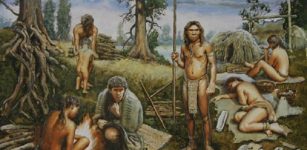 Humans Started Wearing Clothes 100,000 To 500,000 Years Ago
Ancient History Facts | Mar 17, 2018
Humans Started Wearing Clothes 100,000 To 500,000 Years Ago
Ancient History Facts | Mar 17, 2018 -
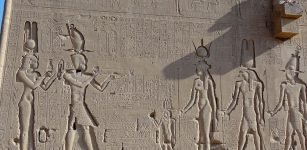 Why The Discovery Of Cleopatra’s Tomb Would Rewrite History
Featured Stories | Nov 16, 2022
Why The Discovery Of Cleopatra’s Tomb Would Rewrite History
Featured Stories | Nov 16, 2022 -
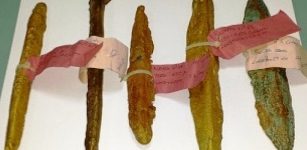 Legendary ‘Orichalcum Metal’ Related To Atlantis Found In 2,600-Year-Old Shipwreck
Archaeology | Mar 3, 2017
Legendary ‘Orichalcum Metal’ Related To Atlantis Found In 2,600-Year-Old Shipwreck
Archaeology | Mar 3, 2017 -
 Mysterious Tunnel Found Under Saxon Palace Ruins In Warsaw, Poland
Archaeology | Sep 14, 2023
Mysterious Tunnel Found Under Saxon Palace Ruins In Warsaw, Poland
Archaeology | Sep 14, 2023 -
 Three 1850-Year-Od Stone Ossuaries Prevented From Looting Near Kafr Kanna In Galilee
Archaeology | Jun 21, 2023
Three 1850-Year-Od Stone Ossuaries Prevented From Looting Near Kafr Kanna In Galilee
Archaeology | Jun 21, 2023 -
 Superhighways Traveled By The First Australians Reveal A 10,000-Year Journey Through The Continent – New Study
Archaeology | Feb 3, 2023
Superhighways Traveled By The First Australians Reveal A 10,000-Year Journey Through The Continent – New Study
Archaeology | Feb 3, 2023 -
 Gallic Leader Vercingetorix In Victorious Battle Of Gergovia, 52 BC
Featured Stories | Jan 23, 2017
Gallic Leader Vercingetorix In Victorious Battle Of Gergovia, 52 BC
Featured Stories | Jan 23, 2017 -
 The Hittites – Rise And Fall Of An Ancient Powerful Empire
History | Feb 18, 2019
The Hittites – Rise And Fall Of An Ancient Powerful Empire
History | Feb 18, 2019 -
 Intriguing Study Reveals Genes And Languages Aren’t Always Found Together – What Does This Say About Our Ancestors?
Archaeology | Nov 22, 2022
Intriguing Study Reveals Genes And Languages Aren’t Always Found Together – What Does This Say About Our Ancestors?
Archaeology | Nov 22, 2022 -
 Ancient Chinese Ingenuity Created Sophisticated Time Keeping Machines: Proof Of Remarkable Ancient Knowledge
Ancient Technology | Jan 14, 2019
Ancient Chinese Ingenuity Created Sophisticated Time Keeping Machines: Proof Of Remarkable Ancient Knowledge
Ancient Technology | Jan 14, 2019 -
 Perfectly Preserved Roman Tombs Discovered Near City Of Capua Where Spartacus Trained As Gladiator
Archaeology | Jan 7, 2021
Perfectly Preserved Roman Tombs Discovered Near City Of Capua Where Spartacus Trained As Gladiator
Archaeology | Jan 7, 2021 -
 Surprising Inscription Discovered On Birka Ring – Ancient Viking Artifact
Archaeology | May 13, 2015
Surprising Inscription Discovered On Birka Ring – Ancient Viking Artifact
Archaeology | May 13, 2015 -
 Surprising Evidence Of 12,000-Year-Old Unknown Advanced Secret Knowledge Held By Elite Individuals – The Connection – Part 2
Ancient Mysteries | Feb 7, 2021
Surprising Evidence Of 12,000-Year-Old Unknown Advanced Secret Knowledge Held By Elite Individuals – The Connection – Part 2
Ancient Mysteries | Feb 7, 2021 -
 Mystery Of Biblical Adam – A Hidden Story Within A Story Open To Interpretation
Ancient Mysteries | Jan 18, 2018
Mystery Of Biblical Adam – A Hidden Story Within A Story Open To Interpretation
Ancient Mysteries | Jan 18, 2018 -
 Researchers Confirm Museum Shrunken Head As Human Remains
Archaeology | Aug 4, 2022
Researchers Confirm Museum Shrunken Head As Human Remains
Archaeology | Aug 4, 2022 -
 Magnificent Ancient Treasures Of The Mysterious Kangju Kingdom Found By Archaeologists
Archaeology | Jun 11, 2024
Magnificent Ancient Treasures Of The Mysterious Kangju Kingdom Found By Archaeologists
Archaeology | Jun 11, 2024 -
 Suprising Discovery Of A Well-Preserved Ancient Roman Road In London, UK
Archaeology | Nov 19, 2024
Suprising Discovery Of A Well-Preserved Ancient Roman Road In London, UK
Archaeology | Nov 19, 2024 -
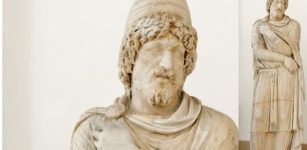 Barbarians Were People Who Didn’t Speak Greek
Ancient History Facts | Jan 18, 2016
Barbarians Were People Who Didn’t Speak Greek
Ancient History Facts | Jan 18, 2016



